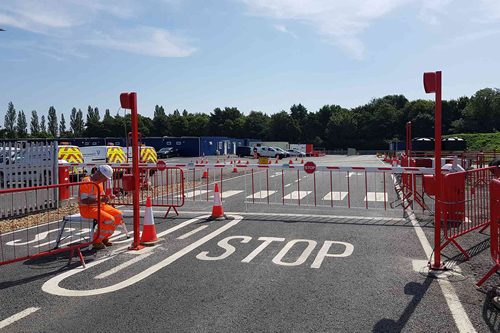Lot has been said in the media recently about the volume of potentially false or dishonest statements made by workers under the State’s Coronavirus Job Retention Scheme (CJRS) or furlough scheme. It was proposed that quite as much as £3.5 billion could have been mistakenly paid out, perhaps because of an error on the part of managers or that the allegation was false. We believe that the HMRC is actively reviewing nearly 27,000 “extreme risk” allegations of the CJRS where misconduct or fraud is alleged. HMRC already has a CJRS scam hotline and urges citizens to notify them of furlough fraud as they become suspicious of it.
WHAT ARE THE EFFECTS OF THE CORONAVIRUS JOB RETENTION SCHEME FRAUD?
The first conviction for furlough theft (with alleged fraud for the sum of £495,000) happened in July and has been widely documented. Two more people in London were taken into custody in September for attempted furlough theft for the sum of £70,000 and there are expected to be further prosecutions in the weeks and months ahead as inquiries proceed.
The Finance Act2020, which fell into effect on 22 July 2020, gave the HMRC authority to audit and recover grants from CJRS that employees were not eligible to obtain. If HMRC decides that a corporation has obtained a grant from CJRS to which it is not qualified, it shall focus to recover the sums through a tax fee irrespective of whether the funds were reported in error or purposely.
HMRC also has the authority to enforce fines for false funding claims, however, there is a time limit during which employees can “own” inaccurate statements by CJRS and escape a fine and a furlough investigation. The value of the settlement is up to the amount of the falsely claimed award, meaning that the contractor will be affected twice as much as the reimbursement (tax) and the fine.
The period for notifying HMRC of erroneous statements and preventing a punishment shall be the latter of:
- October20, 2020 (already passed);
- 90 days from the date on which the employer obtained the wrong CJRS funding;
- 90 days after the conditions modified, implying that the contractor was no more eligible to collect the benefits.
If employees do not “own up” to erroneous statements and are then caught, HMRC will regard the error to report as “deliberated and secret,” which means that the starting point for deciding the value of the fine to be levied will be 100% of the wrongly accepted award.
If businesses come forth after the timeframe has ended, they may be required to pay a fine, although the fines can be decreased. If managers “own” without being asked by the HMRC, the value of the fine may be limited to 30% (but not less) of the inaccurate value of the funding claim. If, moreover, the manager steps forth after being prompted by the HMRC, the liability can be limited to just 50% (but not less) of the wrong value of the funding claim.
RAMIFICATIONS FOR MANAGERS OF INSOLVENT ORGANIZATIONS AND FIRMS:
If HMRC considers that a corporation has obtained funds by CJRS that it’s not eligible to (and is thus liable to a tax fee to repay them), but that business is:
- Leading to insolvency proceedings; or
- There seems to be a “strong risk” that it will be exposed to insolvency proceedings;
And there is a serious risk that any or more of that tax responsibility will not be met, that the individuals accountable for the administration of the corporation will be collectively and greatly eligible (with the firm and one another) for the payment of the related sums. In this situation, the HMRC shall give mutual and multiple notices of responsibility to the persons involved. The individuals accountable for the administration of the organization shall include executives, shadow managers, and others personally or indirectly involved or taking part in the operation of the organization.
The ways which provoke personal responsibility in this manner, the vice president in consideration must have been accountable for the administration of the business at the point the tax in an issue first becomes due i.e., the acceptance of a completely inaccurate or fraudulent grant claim and must have known at the time that the organization was not qualified to obtain the CJRS funds it claimed.
Individual accountability for the refund of unlawfully obtained CJRS funds and related fines is not the end of the issue for managers and administrators. The administrator who is proven to have participated in furlough theft is also at risk of criminal penalties. Besides, they are liable to actions for violation and infringement of their contractual responsibilities, such as the practice of proper precautions, competence and vigilance, and the progress of the performance of the business.
Measures can also be required to disqualify board members under the Business Directors Disqualification Act 1986. The consequence of the dismissal order is that the person cannot, without leave from the court, be the administrator of a business or in any manner (explicitly or implicitly) be involved or engage in the creation, development, or operations of an organization for a duration of up to 15 years.
WORKERS HAVE A SAY IN THIS AND THEY SHOULD:
HMRC did not hold back in urging staff to disclose cases of furlough fraud, and it was announced at the start of August that almost 8,000 complaints had been submitted by HMRC at the time. As the rate of redundancies is likely to rise, we foresee a spike in whistleblowing lawsuits as workers may attempt to contest their dismissal on the ground that the dismissal of their jobs was not due to retention, but because they raised questions (blown the whistle) about being required to operate whilst on furlough, or other practices of their company that may indicate that the organization is not eligible for the furlough funds that they have obtained or asked for.
It is highly advised for managers with some questions regarding these topics and what this could entail for them to pursue legal counsel as a matter of priority to limit their publicity.







